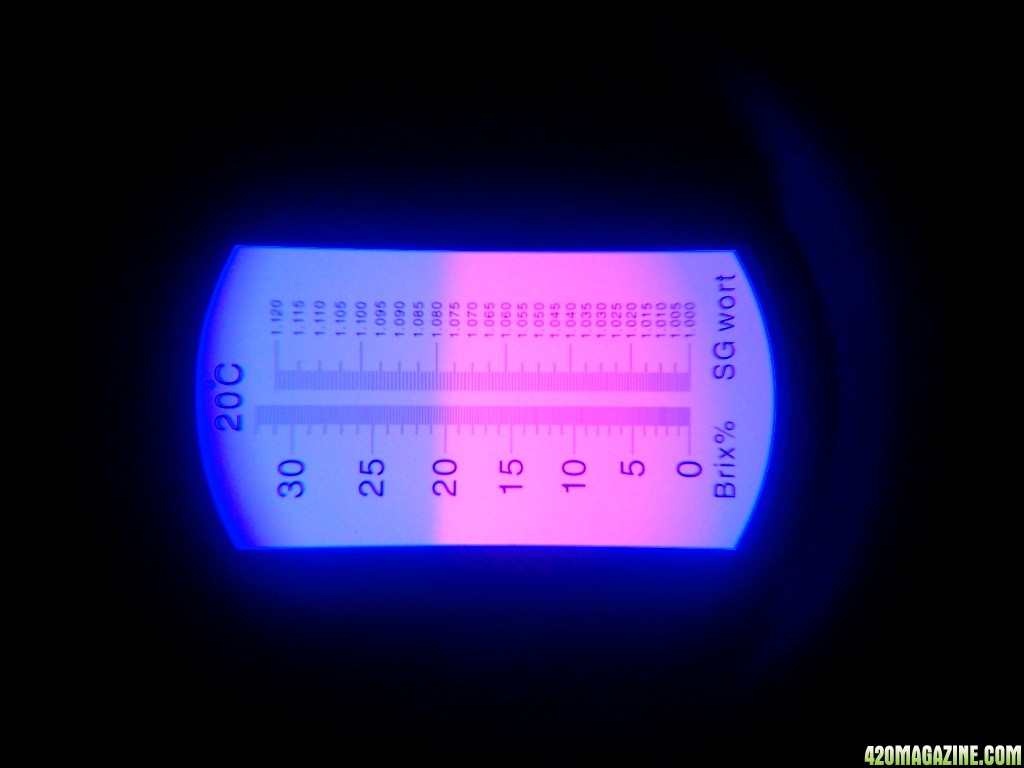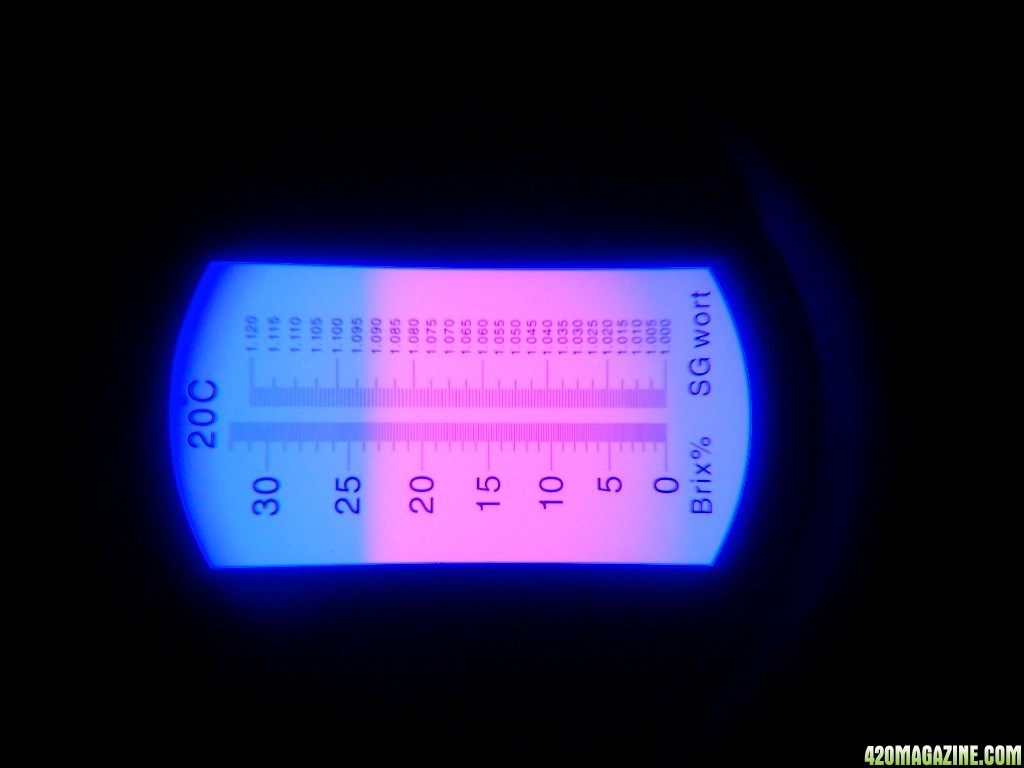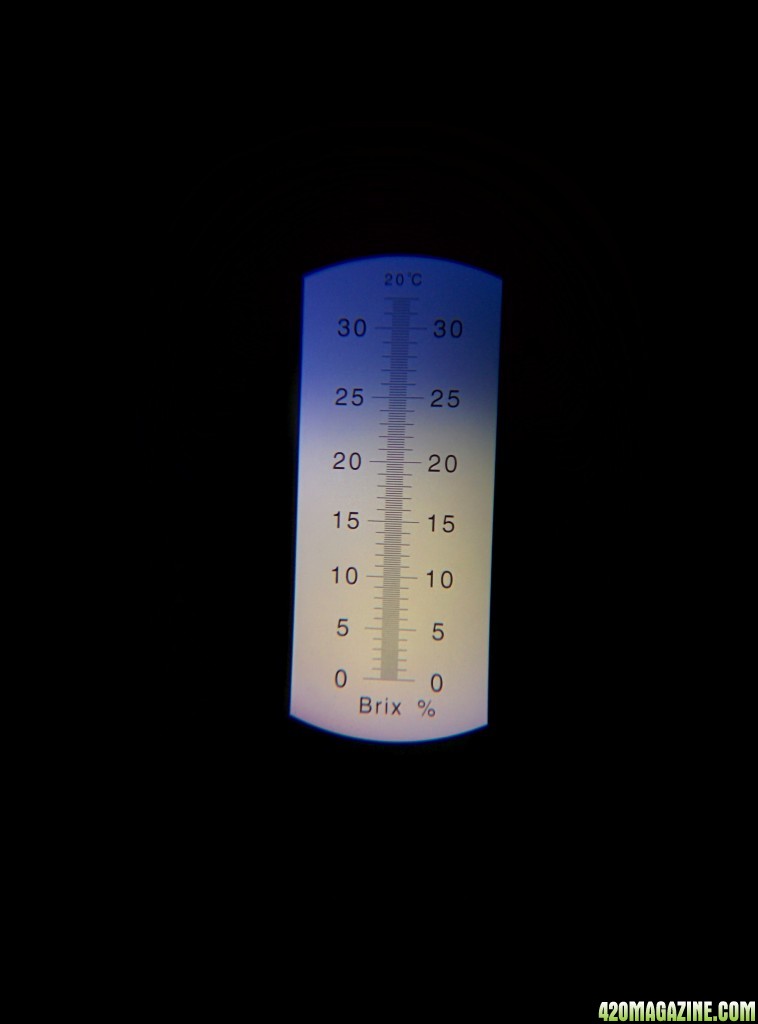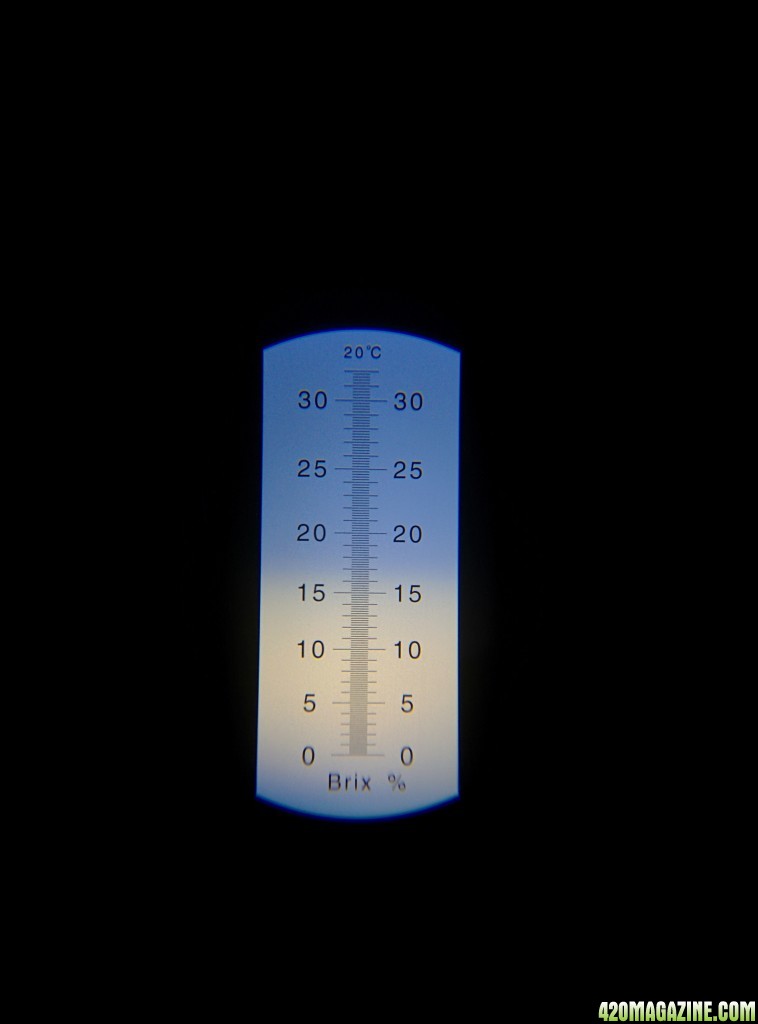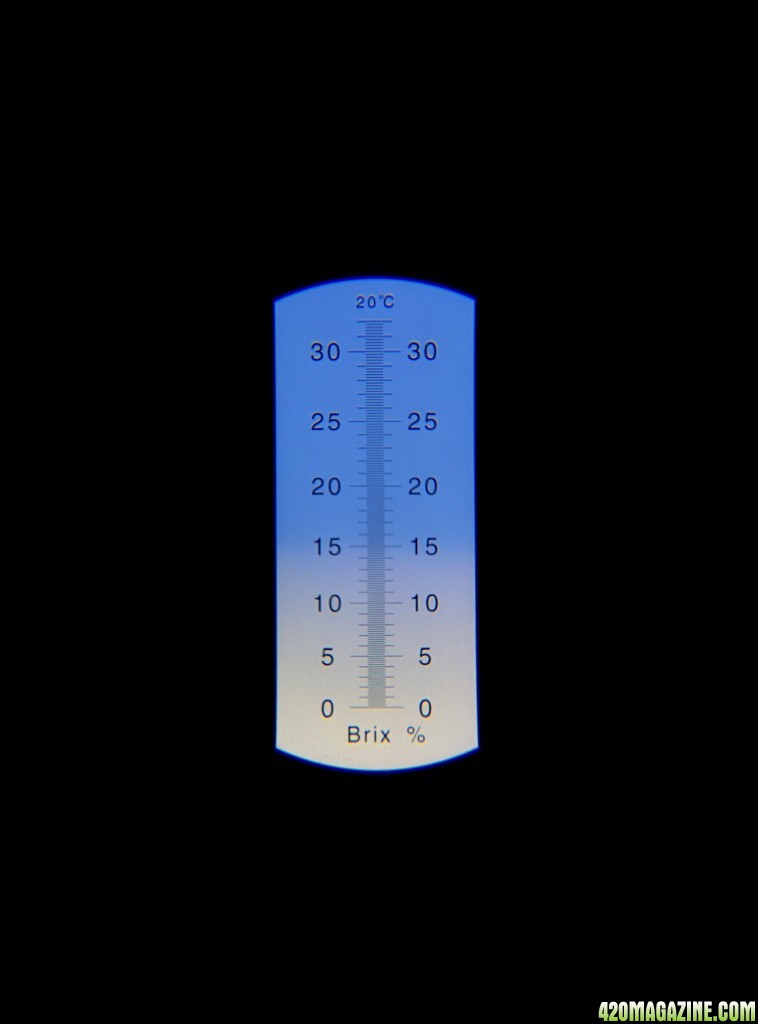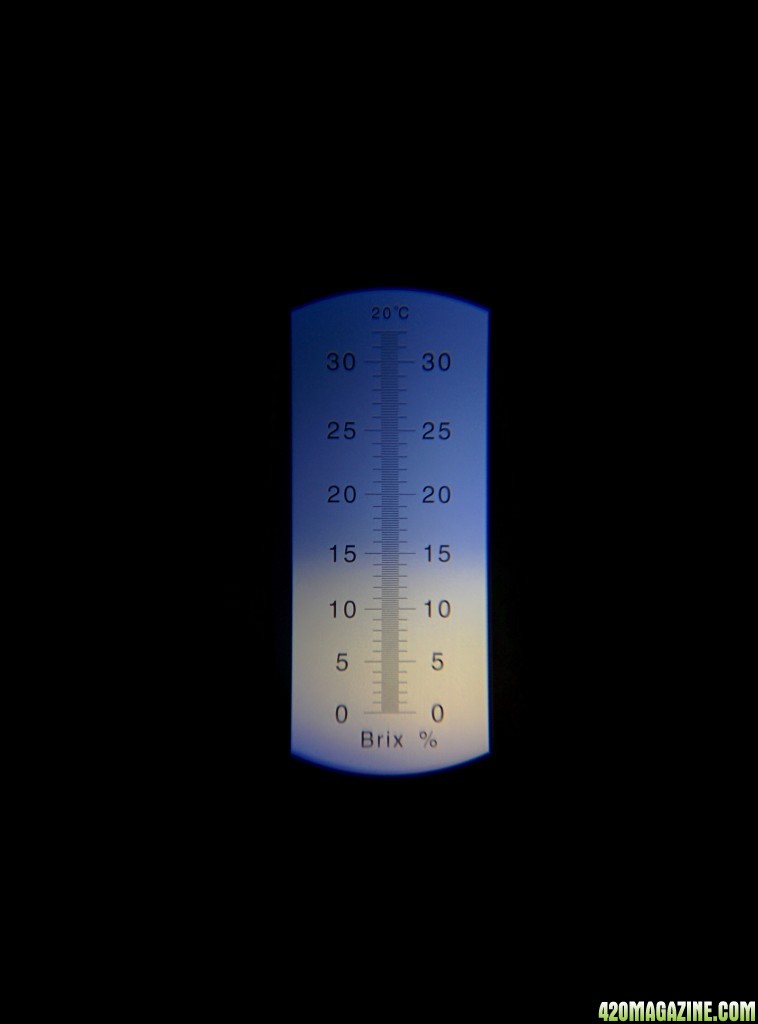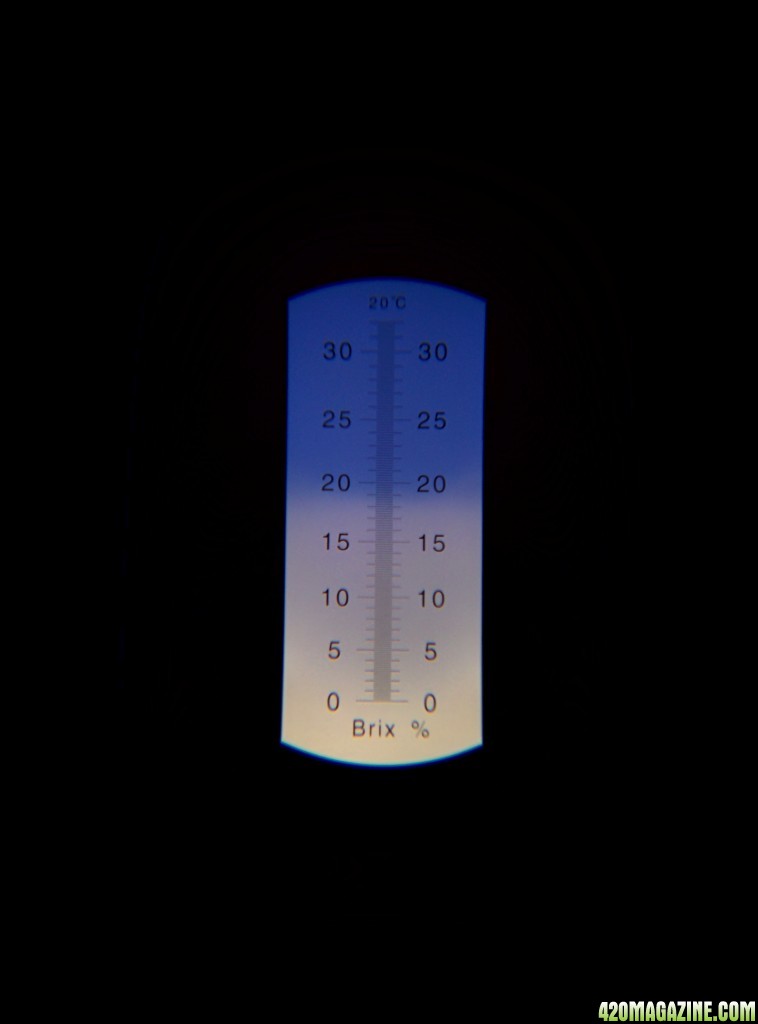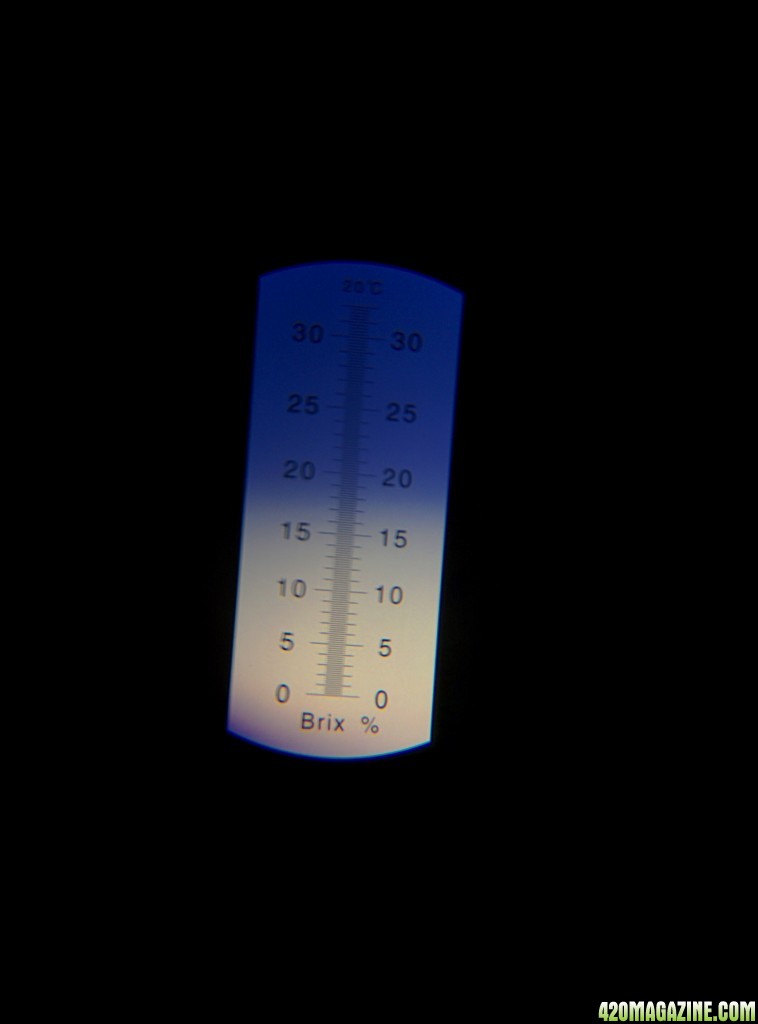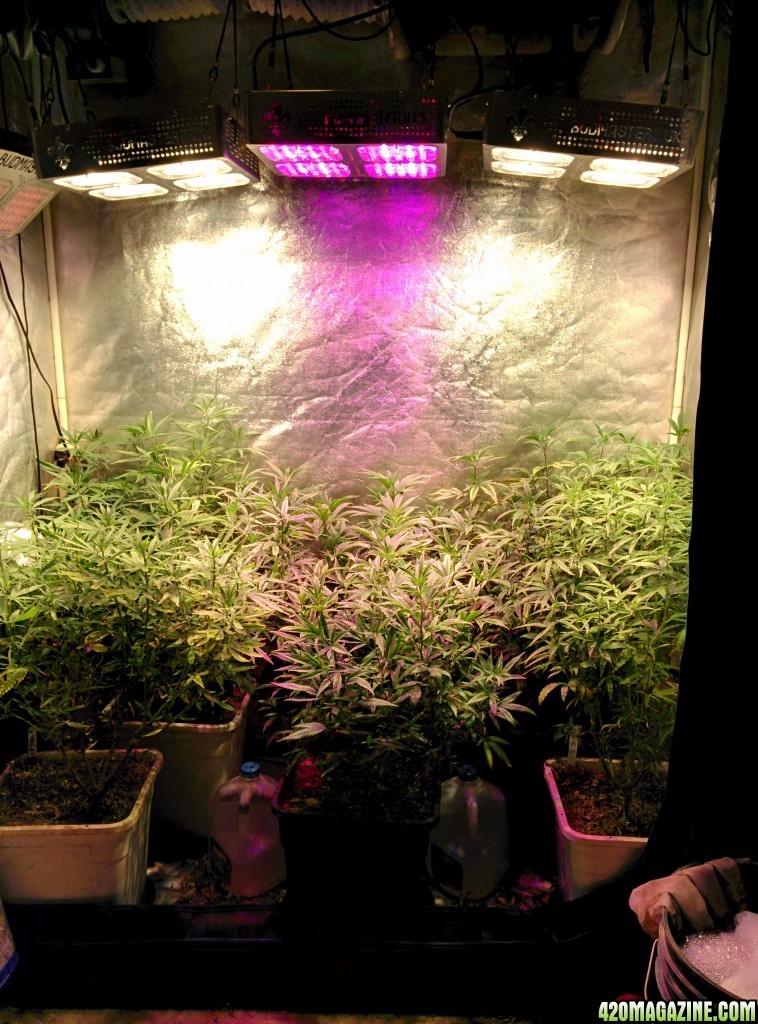I haven't checked my brix in a while and so tonight decided to pull out the refractometer to see where the plants were at. Had some issues with deficiencies a few weeks back and now the plants are pulling really healthy with really good leaf posture so I was curious how they were doing.
I took the readings as usual. Take a nice mature leaf, roll it into a ball and pulverize it with some pliers. Then once its a leafy mush I squeeze a few drops onto the lens and take the reading.
How long in veg/bloom?
I haven't been tracking but about 2 months of veg, still in veg.
What time of day was sample taken? (morning, mid day, evening)
Sample was taken about 5 hours after the lights turned on.
What area of the plant was sampled? (top, middle, new growth?)(leaf, bud)
4th node down from top, on a fully mature leaf.
What growing method or medium?
2+ year old recycled supersoil, most of my dead or trimmed green leaves are recycled back into the soil. I also occasionally will add coffee grounds.
The Base Soil Mix:
ProMix HP
Worm Castings
Volcanic Pumice
Alaskan Forest Humus
The Amendments:
Azomite (trace minerals and micronutrients)
Calcium Carbonate Powder 97%
Soft Rock Phosphate (Collidal Clay with high phosphorus and CEC value)
Gypsum (Calcium Sulfate)
Crab Shell Meal 2-3-0 23% calcium(also a P source and source of chitin a hormone/growth regulator)
Fish Bone meal. (3-18-0) 24% Calcium
Lava Sand (adds trace minerals and supposedly adds paramagnetic value to the soil)
Kelp Meal (also has growth hormones and PGR's, plus trace minerals)
Alfalfa Meal. (2-0-3) (contains Trichontinol which aids in plant growth and health)
Powdered Humic Acid (Adds Carbons to the soil as well as trace minerals and aids in chelation of minerals)
Humboldt Myco's Maximum (Beneficial Bacteria and Mycorrizae Fungus)
Epsom Salts (Magnesium Sulfate)
Greensand (0-0-3) (Trace Minerals)
What nutrients are being used? and whats feeding schedule?
Compost teas, Earthjuice teas, hydrolyzed fish, occasional botanicare pro series
Are foliar sprays being used, what kind and feeding schedule?
compost teas or a mix of hydrolyzed fish, b vitamins, fulvic acid, cal mag with calcium nitrate, yucca extract
What Lighting is being used?
2x budmaster white cob4's, 1x budmaster god4, 1x budmaster 730nm far red emerson led
18/6 veg schedule, canopy receiving between 500-700umol/m2/s-1 of PAR.
CO2?? yes, no, and PPM if you have readouts..
2 milk jugs supplying a small trickle of c02, with yeast, water and sugar.
Black cherry soda: 24-25 brix
ogiesel: 16 1/2 to 17 brix
harlequin: hard to tell but looks about 14 brix
tangie 3: 14 brix
black diamond og: 18.5 brix
tangie 5: looks about 17-18 brix
Here is the garden:







 lol
lol 